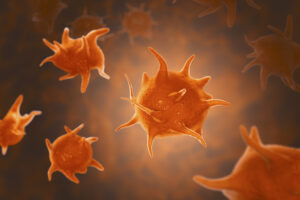Hematology-oncology patients often require multiple platelet transfusions, which can lead to immune-mediated platelet transfusion refractoriness. This condition may necessitate matching platelets to antigens for which the recipient has developed alloantibodies. Hospitals often use several methods when matched platelets are unavailable, but these methods often yield inconsistent results. To improve platelet transfusion responses in these cases, researchers developed an algorithm based on the cumulative donor-specific antibody (DSA) avidity (as measured using newly developed florescent bead-based platforms). Briefly, cumulative donor HLA DSA-mean fluorescent intensity and other donor, patient and component factors were analyzed using multivariable analysis on retrospective data from 73 adult HLA-alloimmunized patients who received 2,012 platelet transfusions (an average of 29 apheresis units per patients over a mean of 45 days). Based on corrected count increments (CCI), researchers found cumulative HLA DSA-mean florescent intensity sums exceeding 10,000 predicted poor 2-hour CCI. Other factors which negatively affected CCI included major ABO mismatch, splenomegaly, transfusion reactions, and the use of platelet storage additive solution compared to plasma. The use of cumulative DSA florescent intensity for HLA avidity may be an alternative platelet mismatching strategy when matched platelets are not available for HLA-alloimmunized patients.
Reference:

